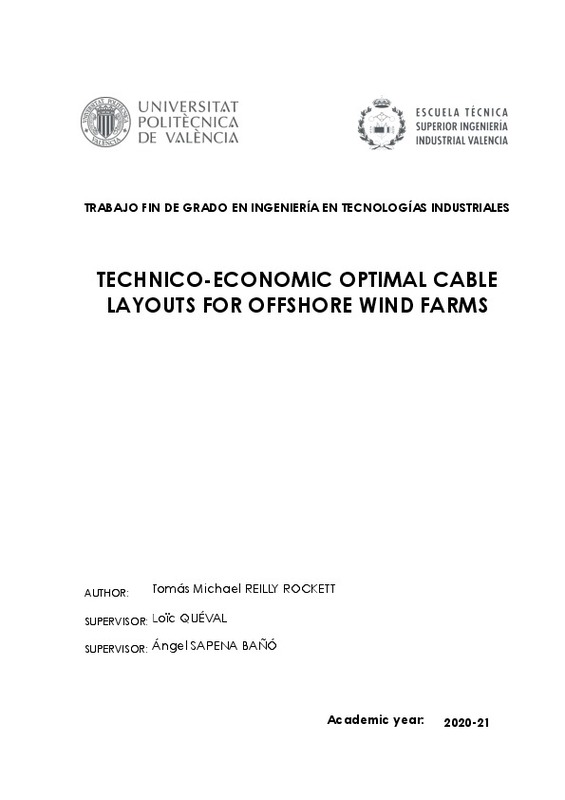JavaScript is disabled for your browser. Some features of this site may not work without it.
Buscar en RiuNet
Listar
Mi cuenta
Estadísticas
Ayuda RiuNet
Admin. UPV
Optimización Técnico-económica del Cableado de Parques Eólicos Marinos
Mostrar el registro completo del ítem
Reilly Rockett, TM. (2021). Optimización Técnico-económica del Cableado de Parques Eólicos Marinos. Universitat Politècnica de València. http://hdl.handle.net/10251/171346
Por favor, use este identificador para citar o enlazar este ítem: http://hdl.handle.net/10251/171346
Ficheros en el ítem
Metadatos del ítem
| Título: | Optimización Técnico-económica del Cableado de Parques Eólicos Marinos | |||
| Autor: | Reilly Rockett, Tomás Michael | |||
| Director(es): | ||||
| Entidad UPV: |
|
|||
| Fecha acto/lectura: |
|
|||
| Resumen: |
[EN] Renewable energy sources are more than ever in the focus of research, funding initiatives and
governmental policies. At the heart of this debate is the desire to make such sources cheaper,
cleaner and more efficient. ...[+]
[ES] Después de un estado del Arte de las técnicas de diseño de trazado de cables para parques eólicos marinos, se implementará un algoritmo de diseño de trazado de cables. El algoritmo se acoplará a un algoritmo de ...[+]
|
|||
| Palabras clave: |
|
|||
| Derechos de uso: | Reserva de todos los derechos | |||
| Editorial: |
|
|||
| Titulación: |
|
|||
| Tipo: |
|
recommendations
Este ítem aparece en la(s) siguiente(s) colección(ones)
-
ETSII - Trabajos académicos [10404]
Escuela Técnica Superior de Ingenieros Industriales







